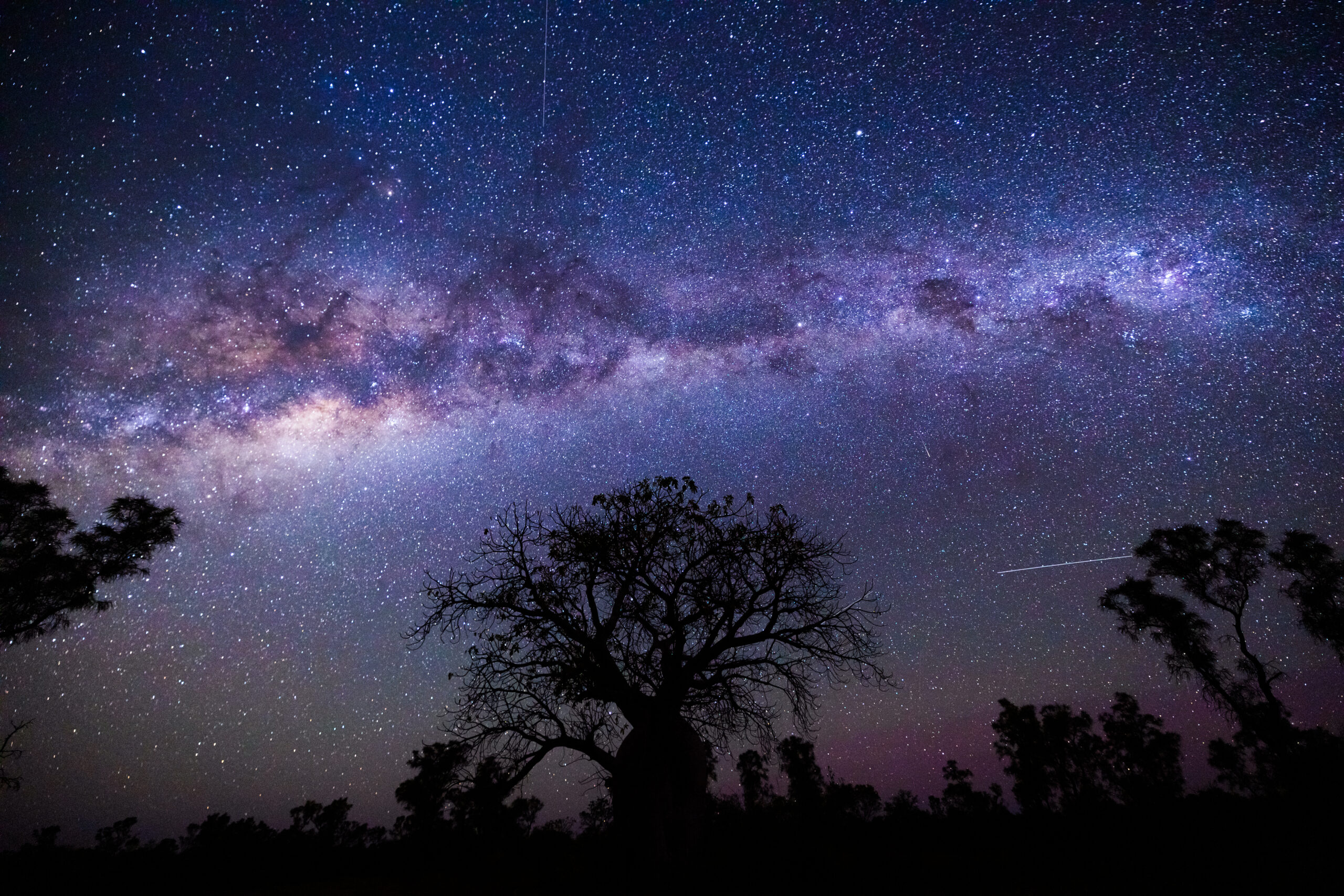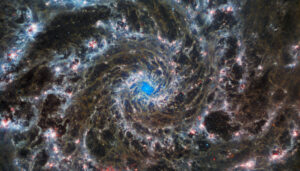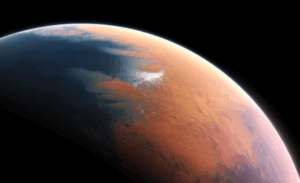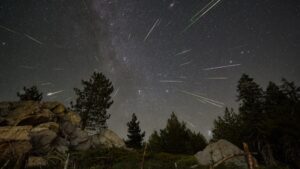The Casual Observer
October brings us into the season of Kambarang, and with it, a noticeable increase in warmer weather. The clear skies present great opportunities for stargazing. The Milky Way is in the western sky during October evenings, marked by Scorpius and the bright red Antares at its heart.

Credit: Stellarium.
Mercury makes for good observing during the second half of the month as it reaches its maximum separation from the Sun in the sky. You can see it on the western horizon after sunset, alongside the faint Mars. On October 20 the two planets reach their closest, separated by about 2 degrees. Mercury will be brighter magnitude –0.19 and Mars is faint magnitude 1.45. They are joined by the New Moon on October 23.

Credit: Stellarium
The Orionids meteor shower peaks on October 21. The constellation doesn’t rise until around midnight so the best time to see this shower is in the early hours of the morning in the northeastern sky.
Meteors in this shower actually originate from Halley’s comet. Tiny specks of dust that were ejected from the comet centuries ago briefly light up the sky with streaks as they are swept up by Earth, a bit like the proverbial fly on the windscreen. In good conditions you might expect to see a meteor every few minutes.

Credit: Stellarium.
ISS sightings from Perth
The International Space Station passes overhead multiple times a day. Most of these passes are too faint to see but a couple of notable sightings* are:
| Date, time | Appears | Max Height | Disappears | Magnitude | Duration |
| 6 Oct 04:48 AM | 10° above SW | 48° | 10° above ENE | -3.0 | 6 min |
| 8 Oct 7:47 PM | 10° above NNW | 50° | 50° above N | -3.4 | 2.5 min |
Table: Times and dates to spot the ISS from Perth
Source: Heavens above, Spot the Station
*Note: These predictions are only accurate a few days in advance. Check the sources linked for more precise predictions on the day of your observations.
Moon phases
Full Moon: October 7
Last Quarter: October 14
New Moon: October 21
First Quarter: October 30
Dates of interest
October 20: Mercury and Mars closest approach
October 21: Orionids Meteor Shower peaks
October 23: Mercury, Mars and Moon together in western sky
Planets to look for
Mercury makes for good observing in the western sky during October evenings. The faint Mars is there as well, though this is not a great time to see it.
Saturn is visible in the eastern sky after sunset and ambles across the sky over the course of the night. Jupiter is rising at about 2am so is best viewed in the northeastern sky before sunrise.

Credit: Stellarium
Venus is not really worth looking at this month, low on the eastern horizon before sunrise. In the coming months it will disappear behind the Sun until about February where it will appear in the night sky.
Constellation of the month
Triangulum Australe – The Southern Triangle
Triangulum Australe is a small constellation edging on the Milky Way in the far southern sky. Its three brightest stars, Alpha, Beta and Gamma TrA form a nearly equilateral triangle standing out from the background stars.

Credit: Stellarium
Being so far south, the constellation is circumpolar, meaning that it never goes below the horizon as seen from Perth so is visible all night, every night of the year. During October evenings you can find it in the south-southwest, just above the pointers.

Credit: Stellarium
Despite bordering the band of the Milky Way, there are relatively few bright objects or deep sky targets inside the constellation. Perhaps it is best to sit back and enjoy the shape for what it is.

Credit: xkcd
Object for the small telescope
Mercury and Globular Cluster NGC 5897
Mercury is in the best location this year to see it, as its maximum separation from the Sun as viewed from Earth means it will be visible a bit later than usual after sunset, especially towards the end of October. If you’re looking around October 22/23 you might catch sight of the background globular cluster NGC 5897 as well.

Credit: Stellarium









